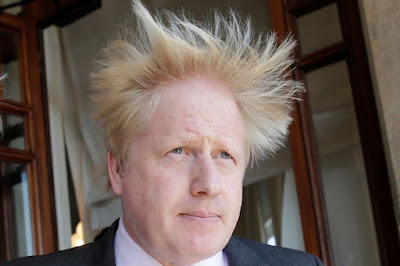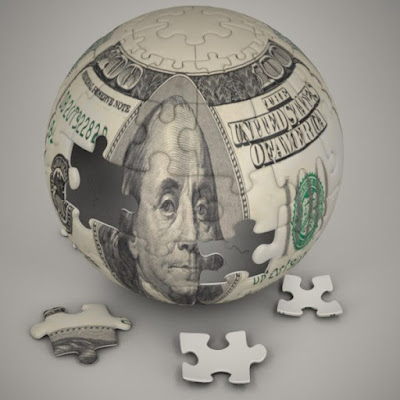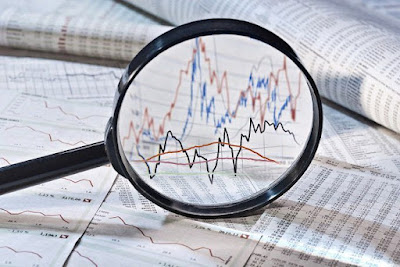The price exchange in the foreign exchange market was a story separate from the macro developments. The euro traded below parity for the first time since 2002. The yen fell to its lowest level against the dollar in 22 years. Sterling, the dollar-bloc currencies, fell to their lowest levels since 2020. Yes, the stronger than expected rise in the US June CPI, above 9%, helped spur speculation that the Fed could raise rates 100 bp in a couple of weeks. Still, the probability was downgraded with some cautionary comments by a couple of the Fed's hawks, even though the June retail sales were stronger than expected, and nine of the 13 categories showed an increase, and the May decline was revised to 0.1% from -0.3%. At the end of the week, the Fed funds futures had
Topics:
Marc Chandler considers the following as important: 4.) Marc to Market, 4) FX Trends, Featured, newsletter, USD
This could be interesting, too:
Nachrichten Ticker - www.finanzen.ch writes Die Performance der Kryptowährungen in KW 9: Das hat sich bei Bitcoin, Ether & Co. getan
Nachrichten Ticker - www.finanzen.ch writes Wer verbirgt sich hinter der Ethereum-Technologie?
Martin Hartmann writes Eine Analyse nach den Lehren von Milton Friedman
Marc Chandler writes March 2025 Monthly
The price exchange in the foreign exchange market was a story separate from the macro developments. The euro traded below parity for the first time since 2002. The yen fell to its lowest level against the dollar in 22 years. Sterling, the dollar-bloc currencies, fell to their lowest levels since 2020.
Yes, the stronger than expected rise in the US June CPI, above 9%, helped spur speculation that the Fed could raise rates 100 bp in a couple of weeks. Still, the probability was downgraded with some cautionary comments by a couple of the Fed's hawks, even though the June retail sales were stronger than expected, and nine of the 13 categories showed an increase, and the May decline was revised to 0.1% from -0.3%. At the end of the week, the Fed funds futures had about a 20% chance of a 100 bp hike.
Developments in the eurozone and Japan may have also served as drags. US Treasury Secretary Yellen and Japan's Minister of Finance Suzuki met, and the risk of material intervention, which we had not thought very high in the first place, may have lessened. Notably, the euro's push through parity did not get much reaction from the ECB outside of the usual boilerplate statement that it was watching the currency market.
Italy's tettered on a political crisis, and the 10-year premium rose every day last week for a cumulative 17 bp increase to a one-month high near 2.15%. We suspect that in a week or so, Italy's political situation will stabilize, and it will become less pressing of an issue. We expect Draghi to remain the prime minister. The key to the peripheral-core spreads may shift from politics to the ECB and the details of the Transmission Protection Mechanism.
We note that the volatility of the S&P 500 (VIX) has slipped back toward 25. The 200-day moving average is slightly above 24. The S&P and NASDAQ gapped higher before the weekend. The volatility of the Treasury market (MOVE) eased a bit after pushing above the pandemic high near 138.40. It finished the week near 137.70. The bill auctions tailed last week. While the three and 30-year auctions were well received, the 10-year was a bit sloppy.
Still, after a good week, the US dollar pulled back ahead of the weekend. So let's take a closer look at the price action.
Dollar Index: The Dollar Index reached almost 109.30 on July 14, its best level since late June 2002. Although it succumbed to profit-taking before the weekend, it closed more than 1% higher for the week. It was the third consecutive weekly advance and the sixth weekly gain in the past seven weeks. The Slow Stochastic appears to be rolling over, and the MACD looks poised to turn down. Initial support may be found near 107.20. The 20-day moving average is slightly below 106.00, and DXY has not closed below it in over a month.
Euro: For the third consecutive week, the euro fell by more than 1%. In fact, the euro has declined for seven of the past ten weeks, and in all but two, the decline exceeds 1%. The momentum indicators are stretched, but the MACD is about to cross higher, and the Slow Stochastic does not appear far behind. A move above the $1.0120 area could signal a move toward $1.03 in a consolidative/corrective phase. That said, a significant low does not appear to be in place. Parity is a nice figure for headlines, but we see more important technical support in the $0.9600-$0.9800 area. The US premium over Germany on two-year money reached 272 bp last week, a three-year high. It had dipped below 200 bp in mid-June after peaking in April near 255 bp. In our work, we have found that interest rate differentials peak before the exchange rate.
Japanese Yen: The dollar surged to JPY139.40 on July 14, a new 24-year high. The speculation of a 100 bp hike by the Fed, while the BOJ, as we will likely learn next week, is continuing to support the economy through asset purchases, negative rates, and yield curve control. The greenback has closed above the upper Bollinger Band in the last two sessions. It begins the new week near JPY138.40. Initial support is likely in the JPY137.75 area. The momentum indicators had pulled back in the first part of the month but have turned higher. The Slow Stochastic is nearly overextended again, but the MACD is not. The JPY140 area is the next psychological area, but the high in 1998 was around JPY147.65 may be important. The five-day moving average (~JPY137.85) has been above the 20-day moving average (~JPY136.30) since early June, illustrating the strength of the trend.
British Pound: In last week's dollar frenzy, sterling fell to its lowest since March 2020, around $1.1760. The nearby cap is around $1.1920, a congestion area seen in recent days, and it is also where a three-week downtrend begins the new week. The MACD is near the middle of its range but drifting lower. The Slow Stochastic is slipping into oversold territory. However, a reversal of the trend does not appear imminent. The US offers about 120 bp more than the UK to borrow for two years. It has risen from a two-month low below 88 bp in late June to almost 137 bp last week before pulling back. The low sterling reached in March 2020 was near $1.14, and there is little to hang one's hat in front of it. Many find the Tories' leadership context engrossing, but it continues to seem marginal to the sterling's price action. After seeing its best level in two months against the euro in the middle of last week, it reversed last week. The euro bounced off of the GBP0.8400 area in the middle of the week and proceeded to recover to meet the (38.2%) retracement objective of a little more than GBP0.8500 before the weekend. The next retracement level (50%) is close to GBP0.8540, and the 20-day moving average is slightly higher.
Canadian Dollar: The Bank of Canada's aggressive 100 bp rate hike did not prevent the Canadian dollar from selling off last week. Amid speculation that the Fed would match the move, the US dollar reached CAD1.3225, its best level since around the US election in 2020 and the announcement of the first vaccine. As the Fed speculation eased, the US dollar returned to where it settled the day before the BOC move (~CAD1.3025). The swaps market has almost a 2/3 chance of a 75 bp hike at the next central bank meeting on September 7. The five-day decline in the S&P 500, as a proxy for risk appetites, seemed to have taken a toll on the Canadian dollar. The S&P 500 gapped higher before the weekend, the gap remains open, and the Canadian dollar gained about 0.75% since June 24. A break of CAD1.30 may push some momentum players to the sidelines, but the CAD1.2935 area, which also hosts the 20-day moving average, may offer better support. The momentum indicators are not generating strong signals around the middle of their ranges but may turn lower with a bit of encouragement.
Australian Dollar: After falling to almost $0.6680, its lowest level since mid-2020, the Aussie recovered to trade at a four-day high at the end of last week (~$0.6805). The nearby ceiling is the $0.6800-$0.6820 band; overcoming it would target the $0.6920 area, last seen on June 30. The MACD has been trending lower since early June, when the Australian dollar last traded above its 200-day moving average (now ~$0.72), and it looks like it is trying to turn higher. On the other hand, the Slow Stochastic has been flatlining since late June and rising ever so slightly. Falling commodity prices may not have helped sentiment, and last week's loss of about 0.95% was the most in the dollar bloc, though admittedly, Canada and New Zealand hiked rates, 100 bp, and 50 bp, respectively. The Aussie-Kiwi cross was practically flat on the week.
Mexican Peso: The Fed hike frenzy lifted the dollar above MXN21.00 for the first time in four months. Good selling was seen. The dollar did not close above it, and follow-through selling saw it fall to a four-day low near MXN20.5245 ahead of the weekend. It settled last week near its lows below this month's uptrend line that came in around MXN20.64. After a three-week rally and appreciating in five of the past six weeks, the dollar is looking a little tired. The MACD has turned down from overbought, and the Slow Stochastic looks about to do so. A key band of support is seen between around MXN20.35 and MXN20.43. It holds several retracement objectives of the last leg higher and moving averages, including the 20-day and 200-day.
Chinese Yuan: The dollar rose a little less than 1% against the Chinese yuan last week. That is the largest weekly advance since mid-May. The greenback's gains simply frayed the upper end of the range that has prevailed since late May, seen around CNY6.75. It stopped just shy of CNY6.77. The dollar's pullback in North America before the weekend may lend support to the yuan. After accepting yuan depreciation for a couple weeks beginning around the middle of April, Chinese officials appear to want a relatively stable dollar-yuan rate at the cost of yuan appreciation against most of its other trading partners. A move above CNY6.80 would be notable. The year's high was set in mid-May near CNY6.8125. Similarly, a break of CNY6.70 would catch attention.
Tags: #USD,Featured,newsletter








